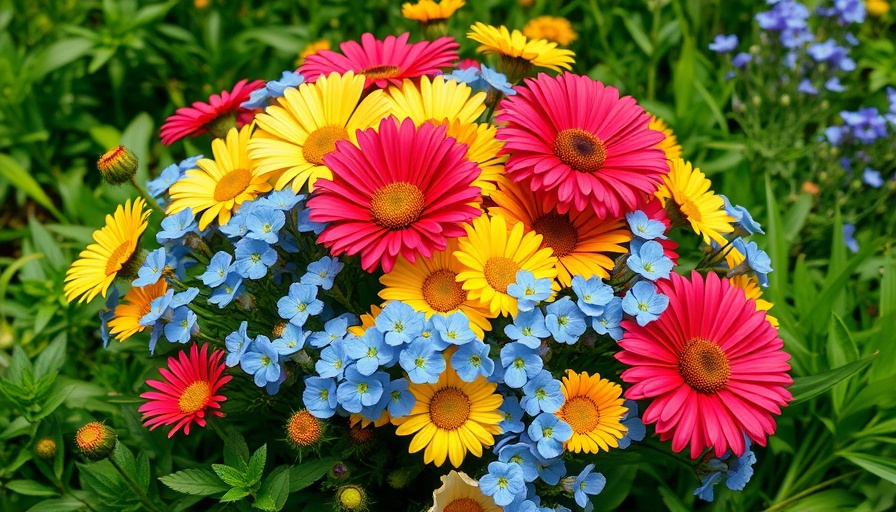
Embracing the Urban Meadow: The Benefits of Wildflower Lawns
Transforming your conventional lawn into a vibrant wildflower meadow is more than an aesthetic choice; it's a step towards environmental stewardship and community beautification. Wildflower lawns are not only stunning but also provide habitats for essential pollinators like bees and butterflies, making them crucial for local ecosystems. By opting for wildflowers, gardeners contribute to biodiversity while reducing the need for chemical fertilizers and pesticides.
Steps to Create Your Own Wildflower Lawn
The journey to a wildflower haven starts with preparation. Begin by assessing your lawn's current state, taking note of factors such as soil quality and sunlight exposure. If the grass is patchy and the terrain uneven, you’re already on the right path toward transformation. After a quick cleanup, choose a wildflower mix that suits your local climate and soil conditions, such as the popular West Coast Seeds Alternative Lawn Mix.
A Journey Through Seasons: How Wildflowers Change
Starting out in spring, seeding your wildflower lawn can yield beautiful blooms by summer, bringing a tapestry of colors that changes with the seasons. Initially, you might see familiar blooms pop up, which can boost your gardening enthusiasm as you witness the transformation unfold before your eyes. Moreover, these flowers thrive on less water, meaning they’re hardy enough to withstand the climate's curveballs—excellent for those in drought-prone areas.
Sustainable Practices: Eco-Friendly Lawn Maintenance
Wildflower lawns require far less maintenance compared to traditional turf lawns; there's no need for fertilizers, chemical treatments, or extensive watering. Instead, a wildflower meadow can flourish with simpler, organic practices. Regular mowing—a couple of times during the growing season—can help promote the health and spread of these wildflowers, encouraging a lush, thick carpet of blooms.
Cultivating Community Through Shared Spaces
Wildflower lawns have proven to be more than personal gardening projects; they often create a sense of community and connection with neighbors. People are drawn to vibrant landscapes that break the monotony of typical grass lawns, resulting in spontaneous gatherings, photo opportunities, and increased interactions among residents. Transforming a single lawn can even inspire neighboring yards, creating a ripple effect of greenery and wildflower joy through your locality.
FAQs About Wildflower Lawns
Turning your lawn into a meadow brings many questions! Here are some common inquiries:
- What if my lawn is mostly shaded? Certain wildflower species like woodland phlox or violets can thrive in less sunny spots.
- Will wildflowers attract pests? Surprisingly, these flowers often deter harmful pests while attracting beneficial insects.
- Can I mix vegetables and flowers? Absolutely! Companion planting is a great way to grow a diverse garden while benefiting both vegetables and blooms.
Your Wildflower Lawn Awaits!
As you embark on your journey from lawn to urban meadow, remember that the process is as rewarding as the final results. Whether you are inviting local wildlife or fostering community relationships, your commitment makes a difference. So why wait? Start realizing your wildflower dreams today! Consider visiting local gardening centers or online retailers to find the perfect seeds to herald your new oasis.
 Add Row
Add Row  Add
Add 




Write A Comment